This article was co-authored by wikiHow staff writer, Eric McClure. Eric McClure is an editing fellow at wikiHow where he has been editing, researching, and creating content since 2019. A former educator and poet, his work has appeared in Carcinogenic Poetry, Shot Glass Journal, Prairie Margins, and The Rusty Nail. His digital chapbook, The Internet, was also published in TL;DR Magazine. He was the winner of the Paul Carroll award for outstanding achievement in creative writing in 2014, and he was a featured reader at the Poetry Foundation’s Open Door Reading Series in 2015. Eric holds a BA in English from the University of Illinois at Chicago, and an MEd in secondary education from DePaul University.
There are 8 references cited in this article, which can be found at the bottom of the page.
This article has been viewed 47,462 times.
Learn more...
You can prepare a wide variety of iodine solutions for chemical tests, medical treatments, and antiseptic use. While each solution calls for a different recipe, all of them require potassium iodide and iodine crystals. Mix standard solutions in distilled water, and tinctures of iodine in ethyl alcohol. Use starch-test iodine to test leaves and Lugol’s iodine as a medication or disinfectant. Use tincture of iodine as a sterilizing solution to clean wounds or damaged skin. Stay safe when handling iodine by wearing nitrile gloves and protective eyewear, and always store your iodine solution in a dark bottle at room temperature to keep it stable.
Steps
Creating a Solution for a Starch Test
-
1Use a starch-testing solution to test plants for glucose. When plants go through photosynthesis, they produce glucose. Plants store this glucose in the form of starch. Iodine reacts with starch and turns it dark blue or black. This test can be performed on a leaf to determine whether or not a plant has gone through photosynthesis.[1]
- Iodine takes a long time to dissolve. Prepare this solution at least 24 hours in advance of the starch test.
- To perform the starch test, boil a leaf in water before placing it in a glass beaker. Place the beaker in ethanol and boil the leaf until the color is gone. Then, place the leaf in a petri dish and sprinkle it with a few drops of the iodine solution to see how it reacts. You must wear gloves and protective eyewear if you’re performing this test.[2]
-
2Put on protective eyewear and disposable nitrile gloves. To avoid diluting your solution or staining your skin, put on a set of disposable nitrile gloves. To keep chemicals from damaging your eyes, put on a pair of airtight laboratory goggles. Open the windows in your room or turn a fan on to increase the ventilation.[3]
- While iodine isn’t toxic in low doses, it’s better to take the proper safety measures just to be safe.
Advertisement -
3Dissolve 6 grams of potassium iodide in distilled water. Fill a clean beaker or flask with 200 mL (0.85 c) of distilled water. Then, use a scale and scooper to weigh out 6 grams of potassium iodine. Pour the potassium iodine carefully into your water.
- Potassium iodine comes in liquid, tablet, or powder form. Don’t use tablets for this, since they’ll take too long to dissolve in the water. Liquid is a poor option as well, since it will be hard to measure out correctly.
- Potassium iodide is added to iodine to stabilize it. Iodine on its own isn’t neutral enough to react with the plant matter.
- You can purchase potassium iodide (along with your iodine crystals) online or from a chemical supply company.
-
4Add 3 grams of iodine crystals to the distilled water. Once you’ve added your potassium iodide, use a scooper and scale to weigh out 3 grams of pure iodine crystals. Carefully pour the crystals into the water.[4]
-
5Mix the solution with up to 1 L (4.2 c) of distilled water. Add a little distilled water to the beaker or flask. Mix the solution with a glass mixing stick for 30-60 seconds. If the crystals dissolve entirely, you can stop. If they don’t dissolve after a little mixing, add more water and mix it again. Continue this process by adding water as needed until the crystals fully dissolve. Do not exceed 1 L (4.2 c) of water to keep the solution potent enough for testing.[5]
- If you add more than 1 L (4.2 c) of water, it will be extremely difficult to see the iodine solution reacting with the plant when you apply it.
-
6Store your solution in a dark bottle and close it. Use a funnel to pour the solution into a clean, dark bottle. Label the bottle and close the cap by twisting it shut. Store the solution at room temperature.[6]
- If you don’t have a dark bottle, you can wrap a clear container in aluminum foil or store it in a dark cabinet.
- The solution will typically remain stable for 1-2 months.
Variaton: There are several other iodine solutions that you can create for chemical testing or consumption. They use the same method described here with different amounts of iodine and iodide. The most popular is Gram’s iodine, which is used to prepare cell walls for staining tests. You can make Gram’s iodine by dissolving 6.7 grams of iodide in 100 mL (20 tsp) of distilled water and adding 3.3 grams of iodine.
Mixing Lugol’s Iodine as Medicine
-
1Create Lugol’s iodine to use as a medication. Named after the doctor that invented it, Lugol’s iodine is an iodine solution used primarily as a medication. It is ingested orally as a temporary treatment for thyrotoxicosis, a hormone disorder caused by an overactive thyroid. You may need to mix Lugol’s iodine if you’re in medical school, taking an advanced college course, or in an emergency situation where you need to treat thyrotoxicosis.[7]
- You can purchase pre-mixed Lugol’s iodine over the counter at some pharmacies and supplement stores.
- Prepare this solution at least 24 hours in advance of using it. It takes a while for the iodine to completely dissolve in the water, even if it looks like the solution is thoroughly mixed.
- Lugol’s iodine can also be used to disinfect surgical incisions, remove mercury residue, and screen for cervical cancer. It’s mainly known as a medicine, though.
Warning: Do not consume iodine-based solutions without consulting your doctor first. If you have been diagnosed with thyrotoxicosis, follow your doctor’s instructions and take the medicines that they prescribe.
-
2Wear protective eyewear and nitrile gloves to stay safe. Lugol’s iodine isn’t toxic on its own, but you need to keep it off of your skin and out of your eyes. Wear airtight laboratory goggles and put on a pair of nitrile gloves. Open the windows in the room and turn the fan on to increase the ventilation in your work area.[8]
-
3Dissolve 10 grams of potassium iodide in distilled water. Fill a glass beaker or flask with 10 mL (2.0 tsp) of distilled water. Then, weigh out 10 grams of potassium iodide using a scale and scooper. Pour the potassium iodide into the water.[9]
-
4Add 5 grams of iodine to the distilled water and iodide. Use a scoop or dropper to weigh out 5 grams of iodine. Carefully add your iodine to the potassium iodide and water solution.[10]
-
5Heat your water and iodine on a hot plate while stirring. Place your beaker or flask on a hot plate and turn it on. Set it to the lowest heat setting available. While the water heats, use a glass mixing rod to stir the solution. Continue stirring until the iodide and iodine is thoroughly mixed into the water. Then, turn off the hot plate and move the beaker or flask to a heat-safe surface.[11]
- Potassium iodide comes in powder, liquid, or tablet form. Do not use the tablets or liquid forms for this. The tablets will take too long to dissolve and the liquid is difficult to measure in small amounts.
- Do not allow the iodide to boil or bubble. You only need to raise the temperature slightly to combine your ingredients.
Warning: Heating the iodine can increase its noxious odor. While you aren’t working with a particularly dangerous amount, throw on a dust mask or respirator while heating the iodine just to be safe.
-
6Add 25 mL (5.1 tsp) of distilled water to dilute it. Once the iodide and iodine is completely dissolved, dilute your solution with more distilled water. Pour 25 mL (5.1 tsp) of water into the beaker or flask and mix the solution again.[12]
- Let the mixture cool for 5-10 minutes if it’s still warm. The water will likely cool it off just fine, though.
-
7Transfer the solution to a dark dropper bottle for storage. Use a funnel to pour the solution carefully into a dark bottle with a dropper top. Store the solution at room temperature in a dark cabinet. The solution should remain stable for 2-3 months.
- The dropper top will make it easier to add small amounts of Lugol’s iodine as needed.
Creating Tincture of Iodine for Sterilization
-
1Sterilize wounds and surfaces with tincture of iodine. Iodine tincture is commonly found in medical first aid kits as a sterilizing agent. When applied to skin, it disinfects it and removes hazardous bacteria. It can also be used in small amounts to disinfect drinking water or non-porous surfaces, like metal.[13]
- If you do use tincture of iodine to sterilize a surface or skin, handle it while wearing rubber gloves and apply it with a clean cotton pad.
-
2Mix 50 grams of potassium iodide in a small amount of water. Take your potassium iodide powder and weigh out 50 grams using a scale and scooper. Add the potassium iodide to 50 mL (0.21 c) of distilled water.[14]
- Wear nitrile gloves and airtight laboratory goggles while mixing tincture of iodine. While it isn’t toxic in small doses, it’s best to keep your eyes and skin protected.
-
3Add 70 grams of iodine to the water and mix it. Next, use a scooper and scale to weigh out 70 grams of iodine crystals. Pour the crystals into the distilled water and mix the solution with a glass mixing rod. Continue stirring until the crystals are entirely dissolved in the water.[15]
- Since you’re using such a small amount of water, it may take a while for the crystals to dissolve entirely.
-
4Dilute the solution with 950 mL (4.0 c) of ethyl alcohol. Once the crystals have dissolved entirely, get a bottle of pure ethyl alcohol. Carefully measure out 950 mL (4.0 c) of ethyl alcohol. Pour the alcohol into the water and mix it gently with your mixing rod until the color is even and uniform.[16]
- Ethyl alcohol, also known as ethanol, is a pure alcohol that kills bacteria. It is the same type of alcohol used in liquor. You can purchase ethyl alcohol online or at some medical supply stores and pharmacies.
-
5Transfer the solution to a dark bottle and store at room temperature. Use a funnel to pour your solution into a dark bottle. Close the cap and store the iodine in a dark area to keep it safe.
- While the potency of your solution depends upon the temperature that it is exposed to, the solution should last at least 6 months before becoming unstable.
Things You’ll Need
Creating a Solution for a Starch Test
- Nitrile gloves
- Protective eyewear
- Potassium iodide
- Scale
- Scooper
- Iodine crystals
- Water
- Glass rod
- Funnel
- Beaker or flask
Mixing Lugol’s Iodine as Medicine
- Nitrile gloves
- Protective eyewear
- Potassium iodide
- Scale
- Scooper
- Iodine crystals
- Dust mask or respirator
- Water
- Bottle with dropper
- Hot plate
- Glass rod
- Funnel
- Beaker or flask
Creating Tincture of Iodine for Sterilization
- Nitrile gloves
- Protective eyewear
- Potassium iodide
- Scale
- Ethyl alcohol
- Scooper
- Iodine crystals
- Water
- Glass rod
- Funnel
- Beaker or flask
References
- ↑ https://www.nuffieldfoundation.org/practical-biology/testing-leaves-starch-technique
- ↑ https://www.nuffieldfoundation.org/practical-biology/testing-leaves-starch-technique
- ↑ https://www.usalab.com/blog/tips-for-improving-lab-ventilation/
- ↑ https://www.youtube.com/watch?v=72zKnccyH-w
- ↑ https://www.youtube.com/watch?v=72zKnccyH-w
- ↑ https://cfa.uaeu.ac.ae/en/doc/aridland/starch.pdf
- ↑ https://www.ncbi.nlm.nih.gov/pmc/articles/PMC4495864/
- ↑ https://www.usalab.com/blog/tips-for-improving-lab-ventilation/
- ↑ https://www.fda.gov/food/laboratory-methods-food/bam-r40-lugols-iodine-solution
- ↑ https://www.fda.gov/food/laboratory-methods-food/bam-r40-lugols-iodine-solution
- ↑ https://www.fda.gov/food/laboratory-methods-food/bam-r40-lugols-iodine-solution
- ↑ https://www.fda.gov/food/laboratory-methods-food/bam-r40-lugols-iodine-solution
- ↑ https://www.medicines.org.uk/emc/files/pil.4871.pdf
- ↑ https://www.flinnsci.com/api/library/Download/18ce587821c24fb3b0ad7d878bd6a3d9
- ↑ https://www.flinnsci.com/api/library/Download/18ce587821c24fb3b0ad7d878bd6a3d9
- ↑ https://www.flinnsci.com/api/library/Download/18ce587821c24fb3b0ad7d878bd6a3d9
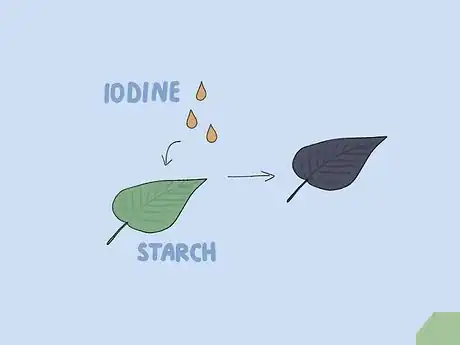
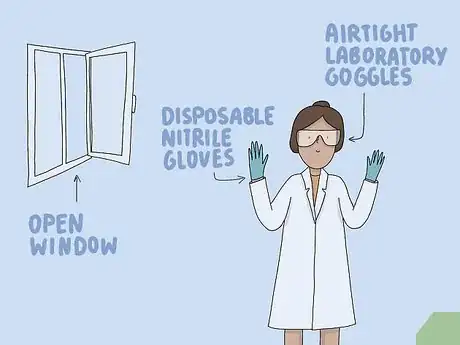
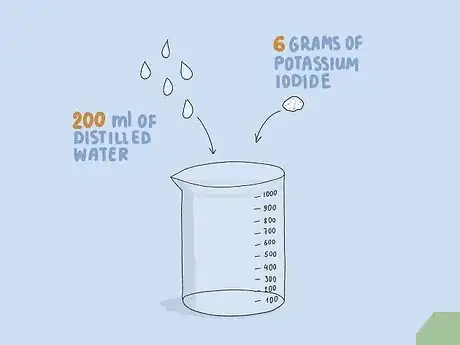
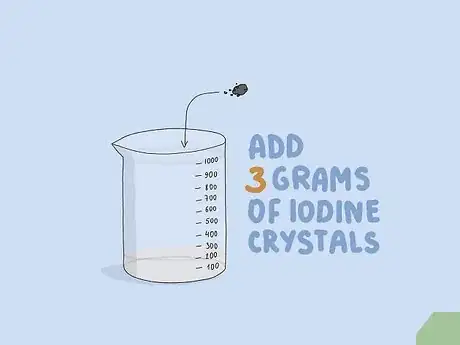

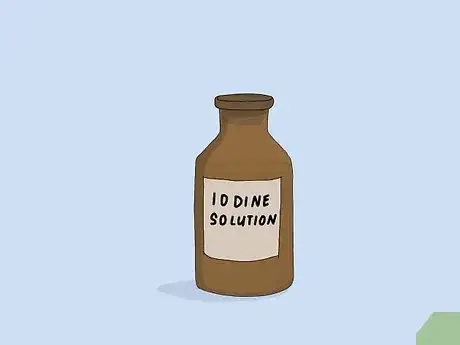
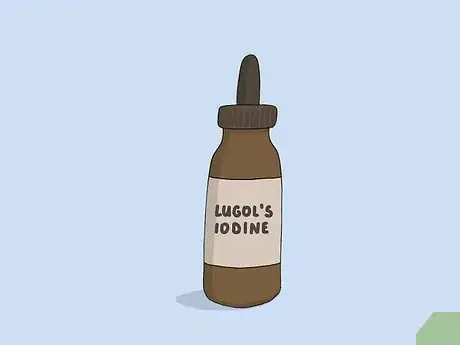

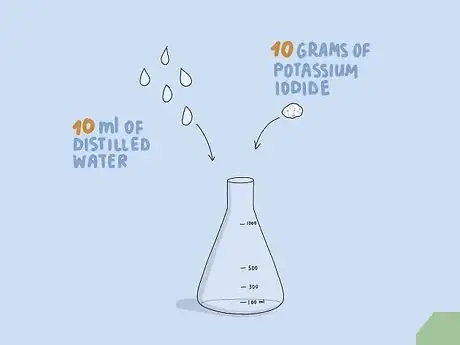


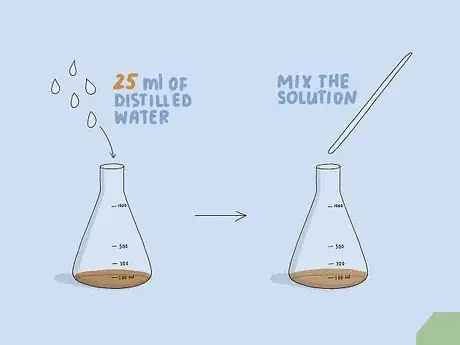
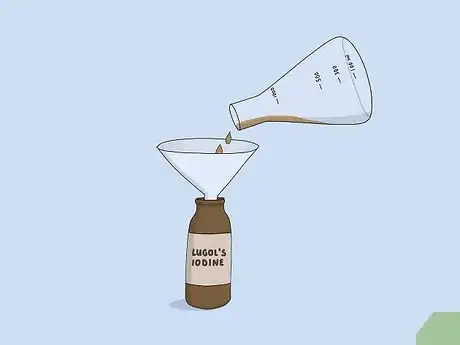
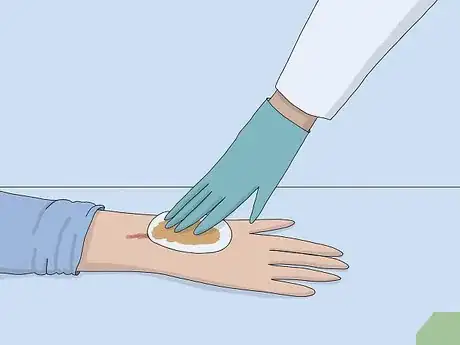
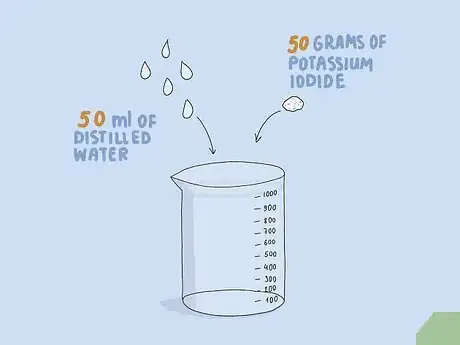
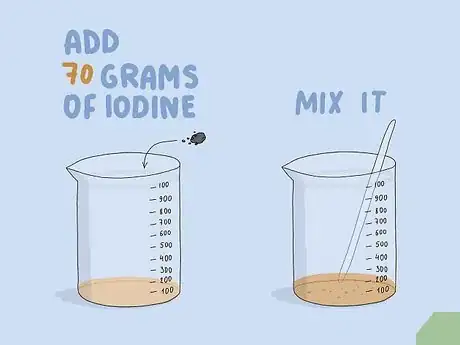

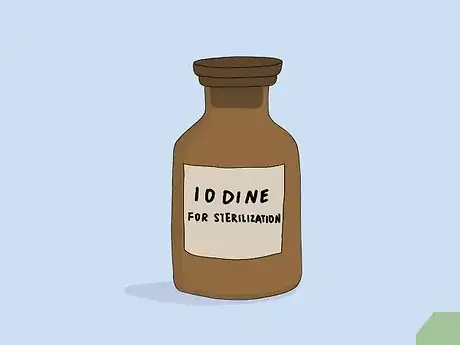








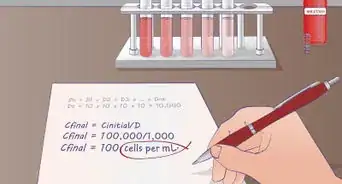


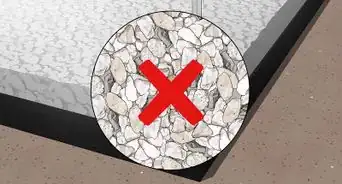
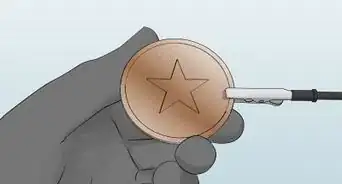














































Medical Disclaimer
The content of this article is not intended to be a substitute for professional medical advice, examination, diagnosis, or treatment. You should always contact your doctor or other qualified healthcare professional before starting, changing, or stopping any kind of health treatment.
Read More...